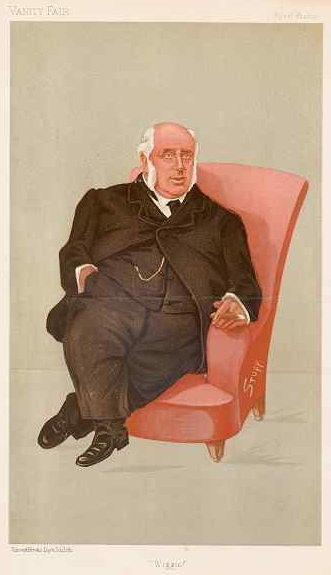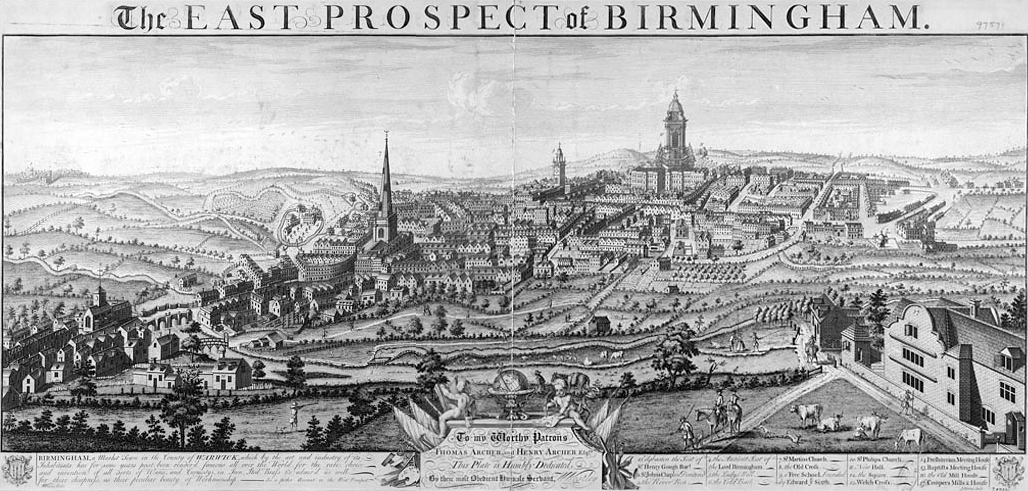|
Brightray
Brightray is a nickel-chromium alloy that is noted for its resistance to erosion by gas flow at high temperatures. It was used for hard-facing the exhaust valve heads and seats of petrol engines, particularly aircraft engines from the 1930s onwards. It was developed by Henry Wiggin and Co at Birmingham. As well as its use as a coating, it is also used in wire and strip form for electrical heating elements. The original Brightray alloy was composed of 80% nickel / 20% chromium. This alloy is still in use today as ''Brightray S'' and can be used at temperatures up to 1050°C. Several other variants are now available. These include nickel-iron-chromium ''Brightray F'' that offers better resistance to both reducing and oxidizing environments. ''Brightray C'' is a nickel-chromium alloy with rare-earth additions to extend its lifetime under fluctuating temperatures, particularly with heating elements that are being continually switched on and off. See also * Nimonic Nimonic is now a ... [...More Info...] [...Related Items...] OR: [Wikipedia] [Google] [Baidu] |
Nickel Alloys
This is a list of named alloys grouped alphabetically by the metal with the highest percentage. Within these headings, the alloys are also grouped alphabetically. Some of the main alloying elements are optionally listed after the alloy names. Alloys by base metal Aluminium * AA-8000: used for electrical building wire in the U.S. per the National Electrical Code, replacing AA-1350. * Al–Li (2.45% lithium): aerospace applications, including the Space Shuttle * Alnico (nickel, cobalt): used for permanent magnets * Aluminium–Scandium (scandium) * Birmabright (magnesium, manganese): used in car bodies, mainly used by Land Rover cars. * Devarda's alloy (45% Al, 50% Cu, 5% Zn): chemical reducing agent. * Duralumin (copper) * Hiduminium or R.R. alloys (2% copper, iron, nickel): used in aircraft pistons * Hydronalium (up to 12% magnesium, 1% manganese): used in shipbuilding, resists seawater corrosion * Italma (3.5% magnesium, 0.3% manganese): formerly used to make coinage of ... [...More Info...] [...Related Items...] OR: [Wikipedia] [Google] [Baidu] |
Nimonic
Nimonic is now a registered trademark of Special Metals Corporation that refers to a family of nickel-based high-temperature low creep superalloys. Nimonic alloys typically consist of more than 50% nickel and 20% chromium with additives such as titanium and aluminium. The main use is in gas turbine components and extremely high performance reciprocating internal combustion engines. The Nimonic family of alloys was first developed in the 1940s by research teams at the Wiggin Works in Hereford, England, in support of the development of the Whittle jet engine. Development Working at Inco- Mond's Wiggin facility at Birmingham in the United Kingdom, Leonard Bessemer Pfeil is credited with the development of Nimonic alloy 80 in 1941, and used in the Power Jets W.2B. Four years later, Nimonic alloy 80A followed, an alloy widely used in engine valves today. Progressively stronger alloys were subsequently developed: Nimonic alloy 90 (1945), Nimonic alloy 100 (1955), and Nimonic a ... [...More Info...] [...Related Items...] OR: [Wikipedia] [Google] [Baidu] |
Henry Wiggin
Sir Henry Samuel Wiggin, 1st Baronet, (14 February 1824 – 12 November 1905) was an English metals manufacturer and Liberal Party (and later Liberal Unionist Party) politician. Biography Wiggin was born on 14 February 1824 in Cheadle, Staffordshire, the son of William Wiggin of Cheadle. William's friend Charles Askin was a partner with Brooke Evans in a nickel and cobalt refining and manufacturing business in Birmingham, and Henry joined the company in 1842. Henry became a partner in 1848 after Askin's death. The company name, originally Evans and Askin, was changed to Evans and Wiggin around 1865 and to Henry Wiggin and Company in 1870. He was also a Director of the Midland Railway, the Staffordshire Water Works Co., the Birmingham Joint Stock Bank, and Muntz's Metal Co. He was a governor of King Edward's School, Birmingham, a J.P. for Worcestershire and Birmingham, and Deputy Lieutenant of Staffordshire. In 1880 Wiggin was elected as a Member of Parliament (MP) for ... [...More Info...] [...Related Items...] OR: [Wikipedia] [Google] [Baidu] |
Nickel
Nickel is a chemical element; it has symbol Ni and atomic number 28. It is a silvery-white lustrous metal with a slight golden tinge. Nickel is a hard and ductile transition metal. Pure nickel is chemically reactive, but large pieces are slow to react with air under standard conditions because a passivation layer of nickel oxide forms on the surface that prevents further corrosion. Even so, pure native nickel is found in Earth's crust only in tiny amounts, usually in ultramafic rocks, and in the interiors of larger nickel–iron meteorites that were not exposed to oxygen when outside Earth's atmosphere. Meteoric nickel is found in combination with iron, a reflection of the origin of those elements as major end products of supernova nucleosynthesis. An iron–nickel mixture is thought to compose Earth's outer and inner cores. Use of nickel (as natural meteoric nickel–iron alloy) has been traced as far back as 3500 BCE. Nickel was first isolated and classifie ... [...More Info...] [...Related Items...] OR: [Wikipedia] [Google] [Baidu] |
Redox
Redox ( , , reduction–oxidation or oxidation–reduction) is a type of chemical reaction in which the oxidation states of the reactants change. Oxidation is the loss of electrons or an increase in the oxidation state, while reduction is the gain of electrons or a decrease in the oxidation state. The oxidation and reduction processes occur simultaneously in the chemical reaction. There are two classes of redox reactions: * Electron transfer, Electron-transfer – Only one (usually) electron flows from the atom, ion, or molecule being oxidized to the atom, ion, or molecule that is reduced. This type of redox reaction is often discussed in terms of redox couples and electrode potentials. * Atom transfer – An atom transfers from one Substrate (chemistry), substrate to another. For example, in the rusting of iron, the oxidation state of iron atoms increases as the iron converts to an oxide, and simultaneously, the oxidation state of oxygen decreases as it accepts electrons r ... [...More Info...] [...Related Items...] OR: [Wikipedia] [Google] [Baidu] |
Refractory Metals
Refractory metals are a class of metals that are extraordinarily resistant to heat and wear. The expression is mostly used in the context of materials science, metallurgy and engineering. The definitions of which elements belong to this group differ. The most common definition includes five elements: two of the fifth period (niobium and molybdenum) and three of the sixth period (tantalum, tungsten, and rhenium). They all share some properties, including a melting point above 2000 °C and high hardness at room temperature. They are chemically inert and have a relatively high density. Their high melting points make powder metallurgy the method of choice for fabricating components from these metals. Some of their applications include tools to work metals at high temperatures, wire filaments, casting molds, and chemical reaction vessels in corrosive environments. Partly due to their high melting points, refractory metals are stable against creep deformation to very high tem ... [...More Info...] [...Related Items...] OR: [Wikipedia] [Google] [Baidu] |
Rare-earth
The rare-earth elements (REE), also called the rare-earth metals or rare earths, and sometimes the lanthanides or lanthanoids (although scandium and yttrium, which do not belong to this series, are usually included as rare earths), are a set of 17 nearly indistinguishable lustrous silvery-white soft heavy metals. Compounds containing rare earths have diverse applications in electrical and electronic components, lasers, glass, magnetic materials, and industrial processes. The term "rare-earth" is a misnomer because they are not actually scarce, but historically it took a long time to isolate these elements. They are relatively plentiful in the entire Earth's crust (cerium being the 25th-most-abundant element at 68 parts per million, more abundant than copper), but in practice they are spread thinly as trace impurities, so to obtain rare earths at usable purity requires processing enormous amounts of raw ore at great expense; thus the name "rare" earths. Scandium and yttrium are ... [...More Info...] [...Related Items...] OR: [Wikipedia] [Google] [Baidu] |
Birmingham
Birmingham ( ) is a City status in the United Kingdom, city and metropolitan borough in the metropolitan county of West Midlands (county), West Midlands, within the wider West Midlands (region), West Midlands region, in England. It is the List of English districts by population, largest local authority district in England by population and the second-largest city in Britain – commonly referred to as the second city of the United Kingdom – with a population of million people in the city proper in . Birmingham borders the Black Country to its west and, together with the city of Wolverhampton and towns including Dudley and Solihull, forms the West Midlands conurbation. The royal town of Sutton Coldfield is incorporated within the city limits to the northeast. The urban area has a population of 2.65million. Located in the West Midlands (region), West Midlands region of England, Birmingham is considered to be the social, cultural, financial and commercial centre of the Midland ... [...More Info...] [...Related Items...] OR: [Wikipedia] [Google] [Baidu] |
Heating Element
A heating element is a device used for conversion of electric energy into heat, consisting of a heating resistor and accessories. Heat is generated by the passage of electric current through a resistor through a process known as Joule heating. Heating elements are used in household appliances, industrial equipment, and scientific instruments enabling them to perform tasks such as cooking, warming, or maintaining specific temperatures higher than the ambient. Heating elements may be used to transfer heat via Thermal conduction, conduction, convection, or radiation. They are different from devices that generate heat from electrical energy via the Peltier effect, and have no dependence on the direction of electrical current. Principles of operation Resistance & resistivity Materials used in heating elements have a relatively high Electrical resistivity and conductivity, electrical resistivity, which is a measure of the material's ability to resist electric current. The Electri ... [...More Info...] [...Related Items...] OR: [Wikipedia] [Google] [Baidu] |
Chromium
Chromium is a chemical element; it has Symbol (chemistry), symbol Cr and atomic number 24. It is the first element in Group 6 element, group 6. It is a steely-grey, Luster (mineralogy), lustrous, hard, and brittle transition metal. Chromium is valued for its high corrosion resistance and hardness. A major development in steel production was the discovery that steel could be made highly resistant to corrosion and discoloration by adding metallic chromium to form stainless steel. Stainless steel and chrome plating (electroplating with chromium) together comprise 85% of the commercial use. Chromium is also greatly valued as a metal that is able to be highly polishing, polished while resisting tarnishing. Polished chromium reflects almost 70% of the visible spectrum, and almost 90% of infrared, infrared light. The name of the element is derived from the Ancient Greek, Greek word χρῶμα, ''chrōma'', meaning color, because many chromium compounds are intensely colored. Indust ... [...More Info...] [...Related Items...] OR: [Wikipedia] [Google] [Baidu] |
Aircraft Engine
An aircraft engine, often referred to as an aero engine, is the power component of an aircraft propulsion system. Aircraft using power components are referred to as powered flight. Most aircraft engines are either piston engines or gas turbines, although a few have been rocket powered and in recent years many small UAVs have used electric motors. Manufacturing industry The largest manufacturer of turboprop engines for general aviation is Pratt & Whitney. General Electric announced in 2015 entrance into the market. Development history * 1903: Manly-Balzer engine sets standards for later radial engines. * 1910: Coandă-1910, an unsuccessful ducted fan aircraft exhibited at Paris Aero Salon, powered by a piston engine. The aircraft never flew, but a patent was filed for routing exhaust gases into the duct to augment thrust. * 1914: Auguste Rateau suggests using exhaust-powered compressor – a turbocharger – to improve high-altitude performance; not accepted after the ... [...More Info...] [...Related Items...] OR: [Wikipedia] [Google] [Baidu] |






